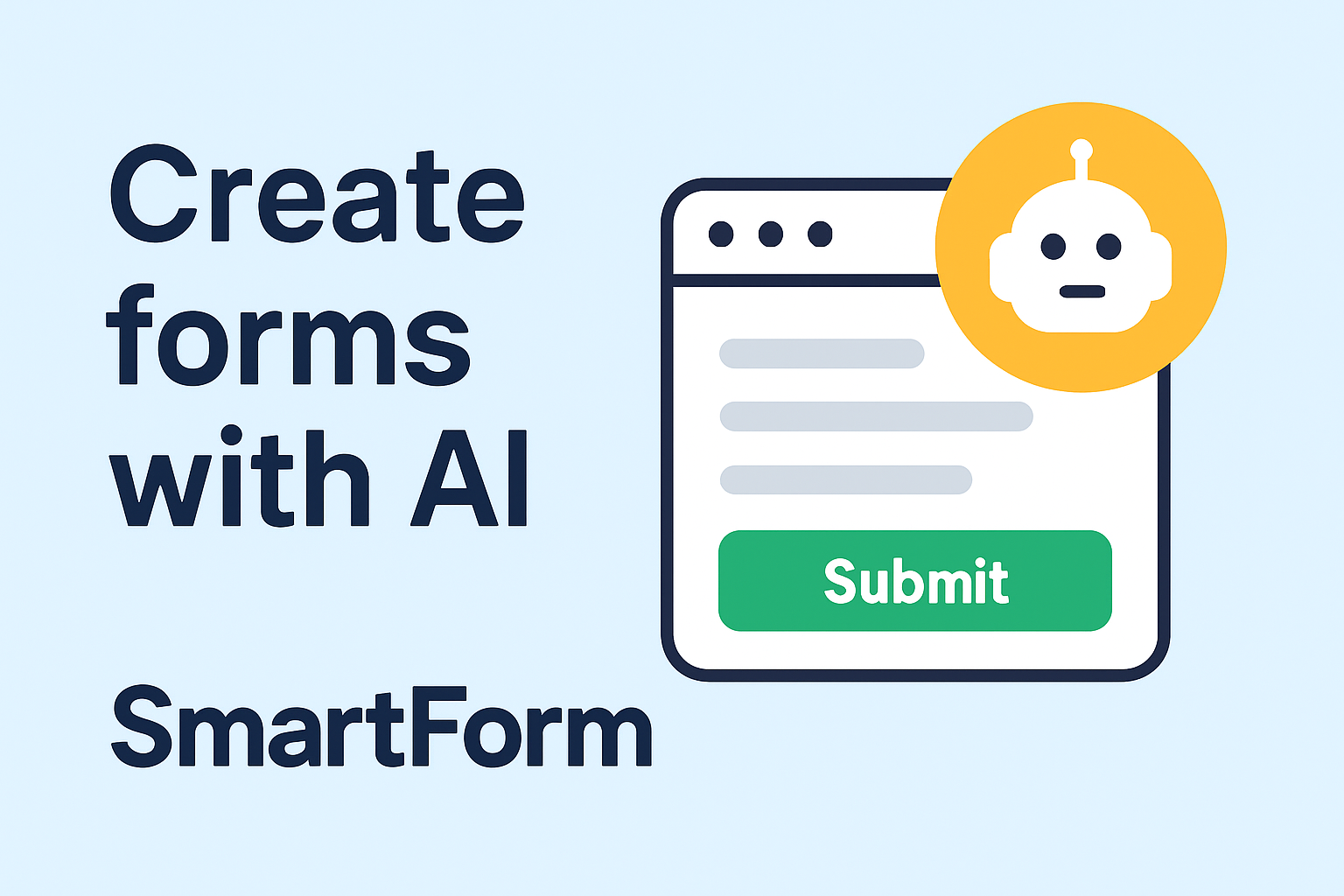PROCESIO
Alternatives
0 PH launches analyzed!
Problem
Traditional form creation and approval flow setups involve complex coding and IT involvement, making the process cumbersome and slow for non-technical users. The involvement of IT and the need for coding skills are key drawbacks.
Solution
PROCESIO is a no-code, low-code, and full-code platform where users can build simple or advanced forms and manage approval workflows without the need for extensive coding skills. It offers tools for creating web forms, collecting user information, and automating processes.
Customers
The primary users of PROCESIO are business analysts, project managers, and technical leads in organizations looking to streamline their process automation and workflow management without extensive reliance on IT teams.
Alternatives
User Comments
Efficient and versatile for managing workflows
Highly customizable without needing coding skills
Improves team collaboration and process automation
Reduces dependency on IT departments
Supportive community and responsive customer service
Traction
Following the specifics cannot be determined without the current data from the product's portal or external insights, which aren't accessible in this context. For accurate traction details, one would typically consider product version releases, user adoption rate, financial metrics like MRR, and community engagement.
Market Size
The global automation market, which includes form creation and process automation, is expected to reach $214 billion by 2025, indicating a substantial potential user base and market for PROCESIO's offerings.

Code to Flow
Visualize, analyze & understand your code flow
131
Problem
Developers often struggle with understanding complex code logic, which can lead to difficulties in debugging, learning new codebases, and optimizing programs. The drawbacks are time-consuming code comprehension processes and inefficient collaboration among team members.
Solution
Code to Flow is a tool that turns code into interactive flowcharts and sequence diagrams with the help of AI. This solution allows users to visualize, analyze, and understand code flow, simplifying complex logic instantly to improve comprehension and collaboration.
Customers
The product is most useful for software developers, engineering students, tech educators, and code reviewers who frequently engage with complex codebases and need to grasp or teach code logic efficiently.
Unique Features
Its unique approach to visualizing code in interactive flowcharts and sequence diagrams using AI distinguishes Code to Flow from conventional code analysis tools. This assists in instant simplification and understanding of complex logic.
User Comments
Comments are not available without additional information on user feedback from sources like ProductHunt or the product's website.
Traction
Traction details such as the number of users, revenue, or version updates are not specified without further research on platforms like ProductHunt or direct insights from the product's official website.
Market Size
The global developer tools market, encompassing products like Code to Flow, was valued at over $9 billion in 2021 and is projected to grow with the increasing demand for software development efficacy.

Rebolt Form Builder
A no-code free form builder | online form maker
4
Problem
Users need to create forms, surveys, and quizzes but face complex interfaces and hidden costs with traditional form builders
Solution
A no-code free form builder enabling users to create custom forms, surveys, and quizzes effortlessly via a drag-and-drop interface
Customers
Small business owners, educators, and marketers requiring simple form creation without technical skills
Alternatives
View all Rebolt Form Builder alternatives →
Unique Features
Completely free with no hidden costs, intuitive drag-and-drop interface, and no-code customization
User Comments
Easy to set up forms in minutes
Saves time compared to other builders
Free plan is fully functional
Perfect for non-technical users
Reliable for basic data collection
Traction
Launched on ProductHunt in 2024 with 500+ upvotes
10,000+ active users
Founder has 1.2k followers on X
Market Size
The global online form builder market is projected to reach $2.3 billion by 2025 (Statista, 2023)

FormScrafter - Free Form Builder
Build unlimited online forms without code – free
7
Problem
Users need to create online forms but face limited forms, restricted features, and hidden costs with traditional form builders.
Solution
A free no-code form builder that allows users to create unlimited forms with all features included, such as surveys, contact forms, and lead generation tools.
Customers
Startups, marketers, and small teams seeking cost-effective, scalable solutions for data collection and user engagement.
Unique Features
Unlimited forms and features entirely free, no coding required, and responsive design templates.
User Comments
Easy to use interface
No hidden fees
Perfect for small businesses
Saves time on form creation
Great for lead generation
Traction
Launched on ProductHunt with details unspecified; positioned as a free alternative in a competitive market.
Market Size
The global online form builder market is projected to reach $3.2 billion by 2025 (Grand View Research).

TensorHub A Low Code No Code AI Platform
Build Smarter. Build Faster. Build with THub.
3
Problem
Users need to build GenAI apps, RAG systems, and autonomous agents through traditional coding, which is time-consuming and requires technical expertise
Solution
A no-code/low-code AI platform where users can drag-and-drop components to build AI workflows, integrate LLMs, vector databases, and data pipelines, and deploy without coding
Customers
Business teams, product managers, and non-technical professionals seeking to implement AI solutions without deep coding knowledge
Unique Features
Seamless integration of LLMs, vector databases, and data pipelines in a unified drag-and-drop interface; pre-built templates for rapid deployment
User Comments
Simplifies AI development for non-coders
Saves weeks of development time
Intuitive interface for workflow creation
Effective RAG system implementation
Scalable for enterprise use
Traction
Launched on ProductHunt with 500+ upvotes (as of analysis)
Claims to accelerate AI app development by 30x
Founder has 1.2K+ followers on LinkedIn
Market Size
The global low-code development platform market is projected to reach $10 billion by 2025 (Gartner)

Advanced Subscribe Forms
Fully custom subscribe forms built to match your brand
144
Problem
Users rely on generic subscribe forms that don't match their brand aesthetics and face limited data collection capabilities with basic fields, leading to lower engagement and inefficient audience segmentation.
Solution
A customizable subscription form tool that lets users design brand-aligned forms with custom fields and advanced styling options, enabling tailored data collection and improved audience growth.
Customers
Marketers and brand managers at startups, SMEs, or content platforms seeking to enhance subscriber acquisition and brand consistency.
Alternatives
View all Advanced Subscribe Forms alternatives →
Unique Features
Ground-up design for flexibility, deep customization (colors, fonts, layouts), and integration of data-rich features like custom fields for granular audience insights.
User Comments
Simplifies form customization
Boosts subscriber growth
Seamless brand integration
Useful data insights
Easy to set up
Traction
Newly launched on ProductHunt with advanced features like custom fields and styling; traction metrics (e.g., upvotes, users) not publicly disclosed.
Market Size
The global email marketing software market, a key segment for subscription tools, is valued at $7.5 billion in 2023 (Statista).

Clappia No-code Low-code Platform
Build intelligent business process apps with no-code & AI
8
Problem
Currently, businesses rely on traditional software development, which can be costly and time-consuming for creating custom business process apps.
The drawbacks include the requirement for specialized coding skills, long development timelines, and high costs.
Solution
A no-code/low-code platform
Users can easily build custom business process apps with Clappia’s intuitive drag-and-drop interface and automate tasks, including GPS tracking, QR/barcode scanning, and AI-driven workflows for data analysis and content generation.
Customers
Business owners, IT managers, and department heads seeking efficient and cost-effective solutions to build and manage custom apps without extensive coding knowledge.
Unique Features
The platform integrates no-code capabilities with AI to automate workflows for data analysis, content generation, and image processing—all in a single platform.
User Comments
Users appreciate the ease of building apps without coding skills.
Many find the drag-and-drop interface intuitive and user-friendly.
The platform's AI capabilities are highly commended for automating complex workflows.
Some users express a desire for more advanced customization features.
The support team is praised for being responsive and helpful.
Traction
Clappia has seen increased traction, with a substantial number of businesses adopting it for process automation and app development.
Recent features like AI integration for data analysis and content generation have enhanced its appeal.
Market Size
The global No-Code Development Platform market size was valued at $6.1 billion in 2021 and is expected to expand at a compound annual growth rate (CAGR) of more than 25% from 2022 to 2030.
Problem
Users previously relied on basic form builders lacking conditional logic, multi-page support, and real-time calculations, leading to limited functionality and user engagement in surveys, registrations, and quizzes.
Solution
A no-code form builder enabling users to create interactive forms with conditional logic, multi-page flows, and real-time calculations, ideal for surveys, registrations, and quizzes without coding.
Customers
Non-technical professionals (e.g., marketers, educators, event organizers) needing advanced forms for data collection, lead generation, or customer feedback.
Unique Features
Combines no-code simplicity with advanced features like conditional logic, multi-page support, real-time calculations, and seamless integrations.
User Comments
Saves time vs coding from scratch
Conditional logic simplifies complex forms
Real-time calculations boost usability
Intuitive drag-and-drop interface
Affordable for small businesses
Traction
Launched on Product Hunt in 2023, ranked #1 Product of the Day with 500+ upvotes; 10,000+ active users as of 2024.
Market Size
The global no-code platform market is projected to reach $45.5 billion by 2028 (Grand View Research, 2023), driven by demand for user-friendly automation tools.

SmartForm – AI-Powered Form Generator
AI-powered form generator — simple, fast & free.
4
Problem
Users need to manually create forms by writing HTML code, which is time-consuming and requires coding skills
Solution
AI-powered form generator tool where users describe their form needs and instantly receive responsive HTML code (e.g., contact forms, surveys) without coding or logging in
Customers
Web developers, small business owners, marketers, and bloggers who need quick, no-code form integration
Unique Features
AI transforms natural language descriptions into functional HTML forms instantly; requires no account creation
User Comments
Simplifies form creation process
Saves hours of coding time
Free and accessible for non-technical users
Produces clean, responsive code
Ideal for rapid website prototyping
Traction
Recently launched on ProductHunt with 500+ upvotes (as of analysis date)
Positioned as free alternative to paid form builders
Growing adoption among indie developers and bootstrapped startups
Market Size
Global online form builder market valued at $1.2 billion in 2023, projected to grow at 9.8% CAGR through 2030 (Grand View Research)
Ridvay Code for VS Code
AI coding assistant that supercharges your VS Code workflow
56
Problem
Users face inefficiencies in coding workflows with manual code generation, refactoring, testing, and debugging. Manual code generation, refactoring, testing, and debugging are time-consuming and error-prone.
Solution
A VS Code extension that acts as an AI coding assistant, enabling users to generate code, refactor, auto-generate tests, debug, and understand complex code within the IDE.
Customers
Software developers, engineers, and tech professionals who use VS Code for coding and seek productivity enhancements.
Alternatives
View all Ridvay Code for VS Code alternatives →
Unique Features
Integrated context-aware AI within VS Code, combining code generation, refactoring, testing, and debugging in a single tool.
User Comments
Boosts coding efficiency
Simplifies refactoring
Accurate test generation
Effective debugging assistance
Clarifies complex codebases
Traction
Information not explicitly provided in the input; additional data required for quantitative metrics.
Market Size
The global AI developer tools market was valued at $2.7 billion in 2023 (Statista).

